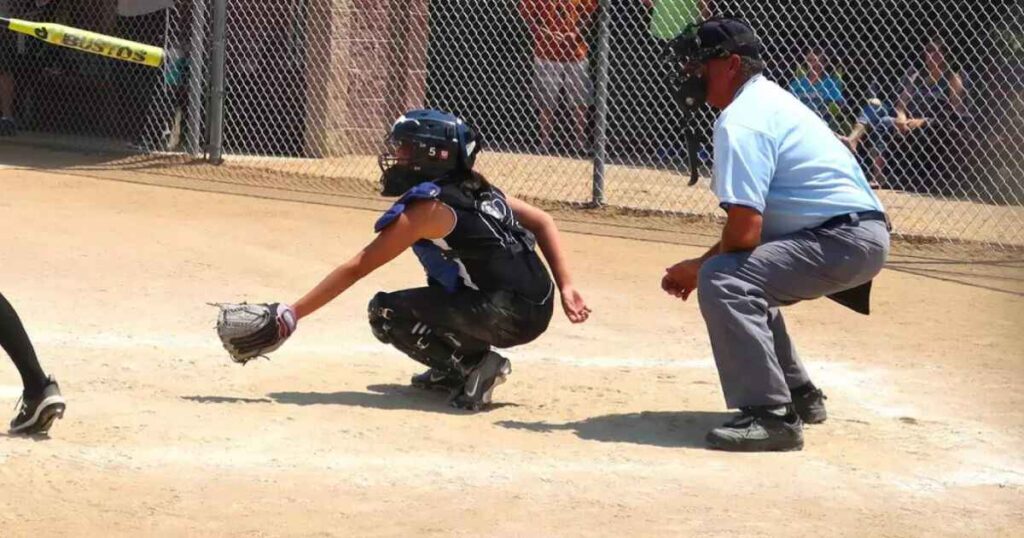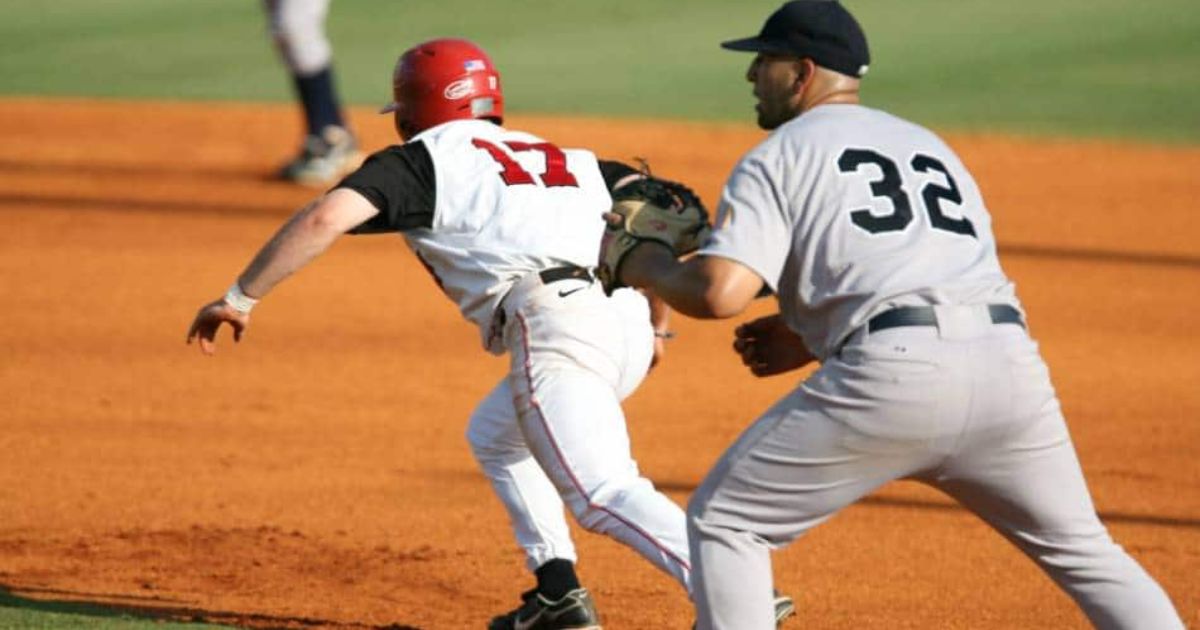Defensive indifference in softball refers to a strategic decision made by the defensive team to allow a base runner to advance without attempting to make a play. This often occurs when the defensive team holds a significant lead and is willing to concede a base to focus on more critical defensive situations. In simpler terms, it’s a calculated choice to prioritize overall defensive strategy over preventing a single base advancement.
What is defensive indifference in softball? It’s a strategic move that can save energy and resources for crucial defensive plays while acknowledging the larger context of the game situation. Understanding defensive indifference adds an intriguing layer to the dynamics of softball strategy.
In softball, defensive indifference is not just about conceding bases; it’s a chess move within the game’s strategy. Coaches and players strategically decide when to employ defensive indifference, weighing the game’s overall situation. This article delves into the nuances of this tactic, shedding light on when and why teams might choose this approach. Discover the tactical intricacies behind defensive indifference and gain a deeper appreciation for the strategic elements that shape the sport of softball.
Understanding Defensive Indifference in Softball
Defensive indifference in softball refers to a strategic decision made by the defensive team to allow a base runner to advance without attempting to make a play. This typically occurs when the defensive team believes that the advancement of the runner won’t have a significant impact on the outcome of the game. In such situations, fielders may choose not to throw the ball to the base the runner is attempting to steal.
Defensive indifference is often employed when the game is in its later stages, and the defensive team has a comfortable lead. Coaches may prioritize preserving pitcher energy or avoiding the risk of errors over preventing the base runner from advancing. Understanding when to use defensive indifference is crucial for softball teams, as miscalculations can lead to unexpected shifts in momentum.
Key Concepts of Defensive Indifference
To grasp the key concepts of defensive indifference in softball, it’s essential to consider factors such as the game situation, the skill level of the defensive team, and the specific strengths and weaknesses of the opposing players. Defensive indifference is not a one-size-fits-all strategy; instead, it requires a nuanced understanding of the dynamics of each game.
Coaches and players must assess the current score, the number of outs and inning in softball to determine whether allowing a base runner to advance is a prudent decision. Successful implementation of defensive indifference relies on a comprehensive understanding of the game context and the ability to make split-second decisions that maximize the team’s overall defensive efficiency.
How Defensive Indifference Impacts Softball Strategy?
The impact of defensive indifference on softball strategy is multifaceted. One significant influence is the preservation of resources, especially the pitcher’s arm. In late-game scenarios or when leading by a substantial margin, coaches may opt for defensive indifference to conserve the pitcher’s energy for more critical situations.
This strategic move allows teams to maintain their pitching strength over a season and avoid unnecessary wear and tear. Teams, therefore, must carefully weigh the potential consequences of defensive indifference on both their defensive and offensive strategies, making it a dynamic element that requires constant assessment and adjustment throughout a game.
Rules and Interpretations of Defensive Indifference
The rules and interpretations of defensive indifference are outlined in the official softball rulebook, but their application can be nuanced. Umpires play a crucial role in determining when defensive indifference is declared. The rulebook provides guidelines, but the interpretation may vary based on the umpire’s judgment.
Coaches and players must have a clear understanding of these rules to effectively implement defensive indifference or capitalize on an opponent’s use of the tactic. Clarity on what constitutes defensive indifference and the specific conditions under which it is applicable ensures fair and consistent gameplay. Teams that thoroughly comprehend the rules and interpretations gain a competitive edge by making informed decisions and avoiding potential disputes during a game.
When to Employ Defensive Indifference in Softball Games?

The timing of employing defensive indifference is a critical aspect of its effectiveness. Typically seen in later innings or when a team holds a comfortable lead, this tactic becomes a strategic tool for managing resources and minimizing risks. Coaches must assess the score, inning, and the current game situation to determine if defensive indifference aligns with their overall game plan.
Recognizing when the opposing team is likely to attempt base running plays also plays a role in decision-making. Timing is everything in softball, and knowing when to deploy defensive indifference can turn a close game in favor of the defensive team or maintain a decisive lead. Coaches’ ability to read the flow of the game and make timely decisions contributes significantly to the success of this strategic element.
The Role of Defensive Indifference in Defensive Strategies
Defensive indifference is an integral component of a team’s overall defensive strategy in softball. Coaches must strike a delicate balance between actively defending against base runners and strategically conserving energy and resources. This tactic becomes particularly relevant when facing opponents with formidable base-running capabilities.
By employing defensive indifference judiciously, teams can disrupt the rhythm of their adversaries and force them to reevaluate their offensive approach. The role of defensive indifference extends beyond the physical aspects of the game, playing a strategic role in shaping the dynamics and outcomes of softball contests.
Implications of Defensive Indifference on Base Running
Defensive indifference has direct implications on base running dynamics in softball. Base runners, recognizing the strategic decision of the defensive team, may exploit the opportunity to advance further than they otherwise would. This can lead to a more aggressive style of base running in situations where defensive indifference is anticipated. Teams must adapt their base-running strategies based on the likelihood of encountering defensive indifference.
Coaches may encourage base runners to seize the moment and take calculated risks, knowing that the defensive team is less likely to contest their advances. The interplay between defensive indifference and base running introduces an additional layer of complexity to the game, requiring both offensive and defensive teams to continuously adjust their strategies in response to unfolding situations on the field.
Common Misconceptions Surrounding Defensive Indifference
Despite its strategic value, defensive indifference is not without its misconceptions. One common misunderstanding is that it reflects a lack of competitiveness or effort from the defensive team. In reality, this tactic is a calculated decision made to optimize overall team performance. Another misconception is that defensive indifference is always employed when a team has a substantial lead.
While this is often the case, it can also be used in close games where preserving energy for critical moments becomes paramount. Clarifying these misconceptions is crucial for players, coaches, and spectators to appreciate the nuanced nature of defensive indifference and its role in shaping the ebb and flow of a softball game.
Umpire Decisions and Defensive Indifference Calls in Softball
The effectiveness of defensive indifference is closely tied to umpire decisions and their interpretation of in-game situations. Umpires must assess whether defensive indifference is a valid explanation for the lack of an attempted play on a base runner. This requires a keen understanding of the game context, the teams involved, and the potential impact on the overall flow of the match.
Coaches often engage in strategic communication with umpires to ensure a mutual understanding of when defensive indifference is in play. The consistency in umpire calls regarding defensive indifference is crucial for maintaining fairness and integrity in the game. Teams that can effectively navigate these interactions gain an additional layer of strategic advantage, emphasizing the importance of effective communication between coaches, players, and officials.
FAQs
When does defensive indifference typically happen?
It commonly occurs in situations where the defending team has a substantial lead, and the focus shifts from preventing runs to preserving time and energy, allowing a runner to advance without active opposition.
How is defensive indifference signaled by the defense?
The defense often signals indifference by not attempting to throw out a base runner attempting to advance, acknowledging that the runner’s movement is unlikely to impact the outcome of the game.
Is defensive indifference a strategy used in every softball game?
No, it is a strategic decision made by the defending team in specific game situations, such as when they have a comfortable lead and preventing a base advancement does not significantly affect the game’s outcome.
Can defensive indifference backfire for the defending team?
While it is a calculated risk, defensive indifference can backfire if the opposing team seizes the opportunity to capitalize on the lax defense, potentially narrowing the scoring gap or shifting the game’s momentum.
Conclusion
Understanding defensive indifference in softball is crucial for players, coaches, and enthusiasts alike. This strategic element in the game involves a calculated decision by the defensive team to allow a base runner to advance without attempting to make a play. Recognizing when defensive indifference is appropriate can impact game dynamics and outcomes.
It underscores the importance of strategic thinking and adaptability on the field. As softball continues to evolve, a comprehensive grasp of such nuances contributes to a team’s overall proficiency and success. One is a player striving for on-field excellence or a spectator relishing the intricacies of the sport, comprehending defensive indifference adds depth to the appreciation and comprehension of softball’s strategic dimensions.








